Both smartwatches are Wear OS-based smartwatches but beyond that, the Ticwatch Pro is more utilitarian while the Suunto 7 is more for sporty people.

Purely by looking at the appearance of the and the 7, you’d think that the is the better of the two watches.
It really comes down to how much more “elegant” it looks. Its design is shinier with its silvery metal case. It’s one of the few smartwatches out there to also incorporate a metallic rear, where the is. It also comes with a leather strap with a rubberized bottom.
On the other hand, the 7 is a bit much less sophisticated in how it looks. My has a really gaudy lime green accent on a black strap. The case is also all black, which is fine, but the amount of plastic on the case really doesn’t sound “premium.”
The 7 is a and the is also a . So why is there such a major difference in the price of these two wearables?
Hardware
The adage, “don’t judge a book by its cover” really comes in play here. The main reason why these two watches differ so much in price is really in whatever hardware and software that’s within these watches.
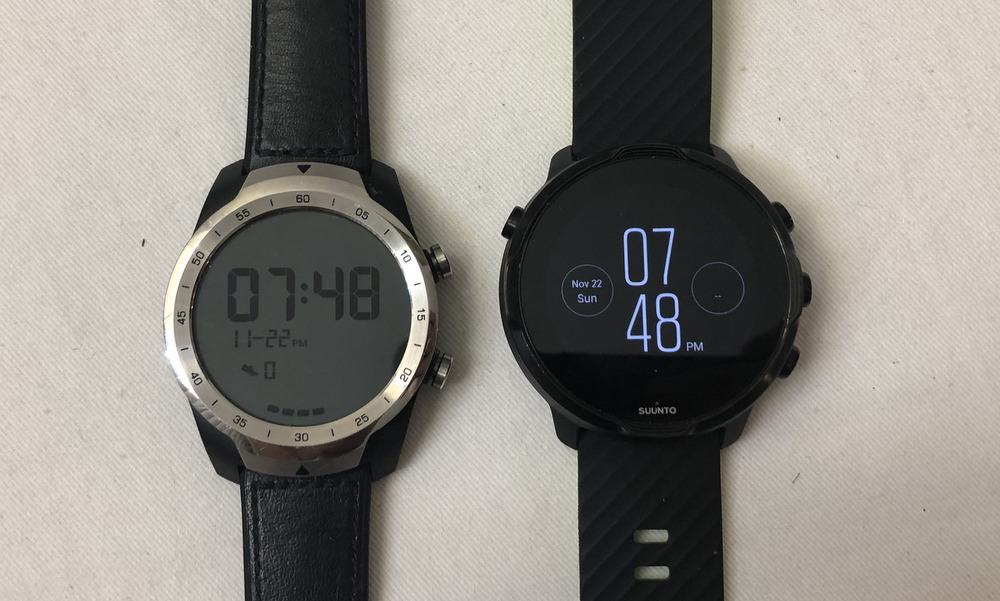
saving technology
The has a pretty good innovation that really gives it an edge over the 7, but otherwise, the 7 has loads more advantages.
The ’s dual-layer screen is one of the most innovative ways to save . What Mobvoi, the makers of the , has done is that they’ve put a saving LCD screen over the full colour LED screen.
This allows you to have better because the activates its LCD screen when it’s idle. The 7 is more typical, having only one full colour LED screen.
Another upside to having the LCD screen on the is that you’ll always be able to see the time as long as there’s ambient light. Whereas with an LED screen, your ability to make out the text on the smartwatch really comes down to how much power the backlight can put out. Luckily, the 7 fares well even in the brightest of summer days.
That said, for both systems are about the same. Neither smartwatch will last beyond two days.
Winner: Tie
Performance and smoothness
I have no doubt that the 7 will win in this regard.
The 7 has more RAM at 1GB and also the latest version of the Wear 3100.
In contrast, the only has the antiquated Wear 2100 and 512MB of RAM. It’s what I would consider very standard stuff a few years ago, but right now it’s a combination for lag and frustration.
In practice, the can be very frustrating because it’s not very good at multitasking. One thing that all Wear OS smartwatches will do is run system updates in the background. I don’t notice it on the 7 but it’s very obvious on the because I know that if there’s unresponsiveness and lag but no obvious reason why, it’s probably an update running in the background.
Winner: 7
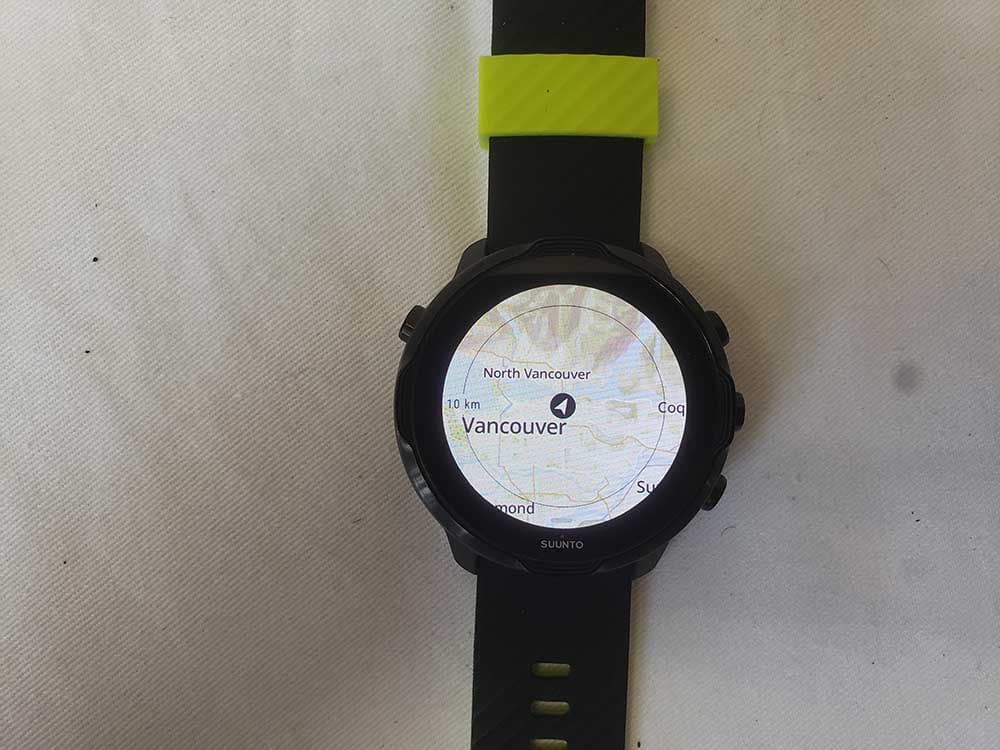
The 7 has which the doesn’t. In fact, few smartwatches have it.
The upside is that with Wear OS watches like the and 7, you can always download Google Maps.
The downside of Google Maps is that it requires you to always have a smartphone with a data connection. So if you go deep in the woods, you might not be able to get access to maps.
This is why I really like the 7. I think if you’re an outdoors enthusiast and frequently go into unfamiliar forests, waters or trails, you will find the 7’s to be amazing. It helps you navigate your way around unmarked trails and that’s a great thing to have.
Winner: 7
Text, emails and speech to text
One of the most important things I look for in a smartwatch is the speech to text function, which builds the basis for a pleasant experience with my smartwatch.
A good speech to text system will allow the user to be able to do many things much more efficiently. One such scenario is when a text comes in.
On both platforms, when someone sends you a text or email, you can reply as long as you are paired to an Android smartphone. I paired both phones to my Note 9.
Then, when you reply, you can choose between using a pre-composed reply, sending an emoji, manual inputs (don’t bother, use your phone instead), or use the speech to text service.
Luckily, the speech to text service is backed by Google’s prowess in voice recognition and therefore the experience with it is very smooth. It does have its moment where it spits out erroneous sentences, but compared to its competition, the quality of the transcription ranks at the top.
Winner: Tie
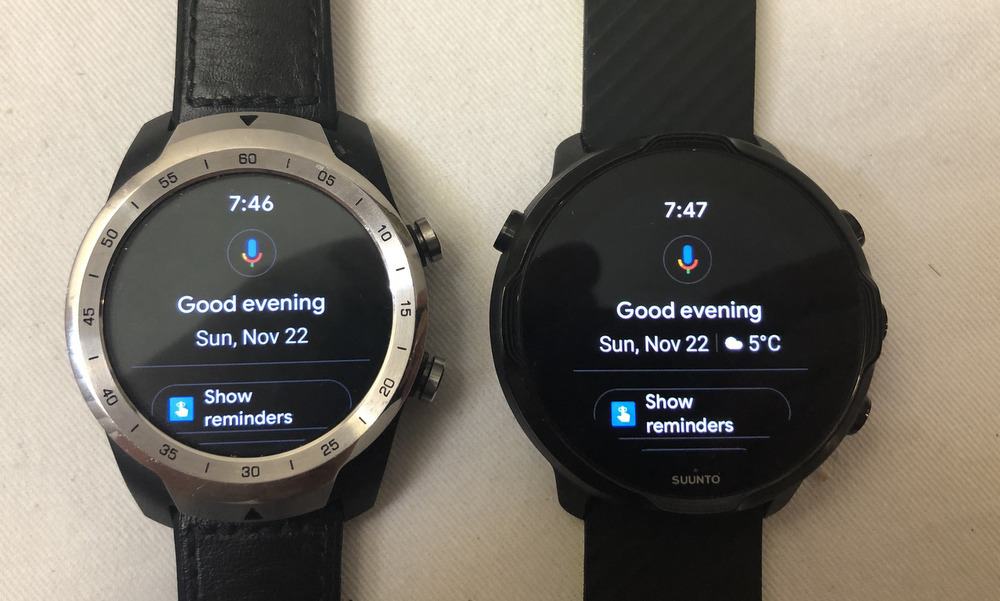
Voice assistant
This leads me to the next most important to improve productivity — the voice assistant.
The voice assistant is very important because it helps you get tedious tasks done by just telling it what you want done.
Google Assistant is really good. You can tell it to start timers, check the weather for a specific city or day and do calculations. If you asked Google Assistant a random question, it will search the web for an answer.
It really helps that the speech to text system is excellent, which in turn, really helps you get your request fulfilled quickly and accurately.
Winner: Tie
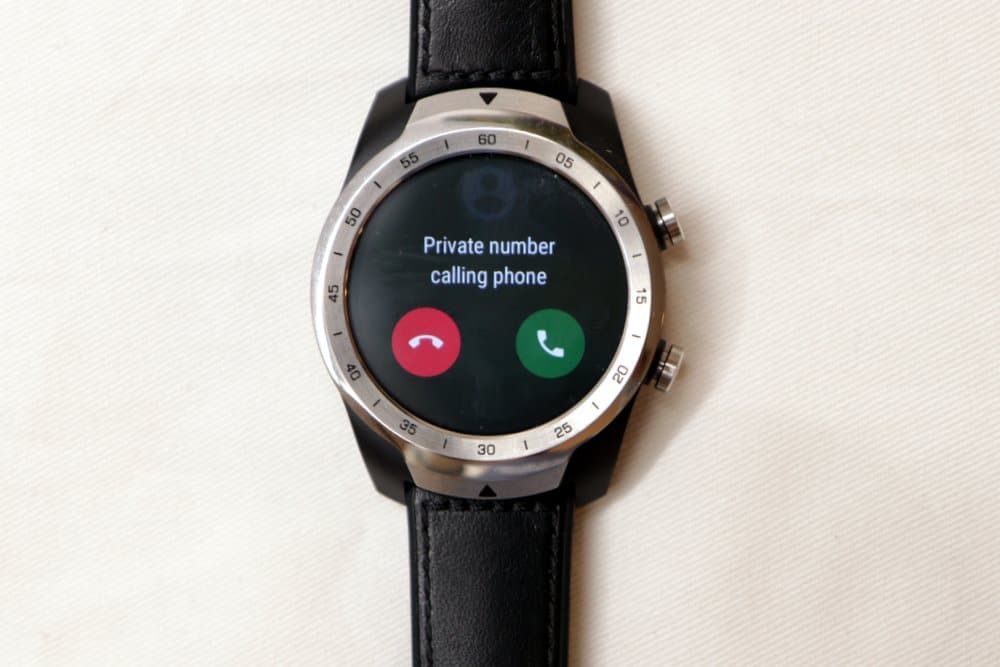
Calls
The Ticwatch Pro absolutely wins in this segment because it has a speaker while the Suunto 7 does not.
This is a nice to have and is mostly present in higher-end smartwatches. It’s a real pity that the 7 does not have it because it’s a convenience I’d like to have.
For example, let’s say you are cycling and somebody calls you. On the 7, you will have to pull your phone out to answer it, whereas on the , you can avoid this and chat with the caller directly on the .
Some people have told me how ridiculous this looks, but if you are the type that cares about utility than looks, then you would probably be happier having a smartwatch with this than one without it.
Winner: Tie
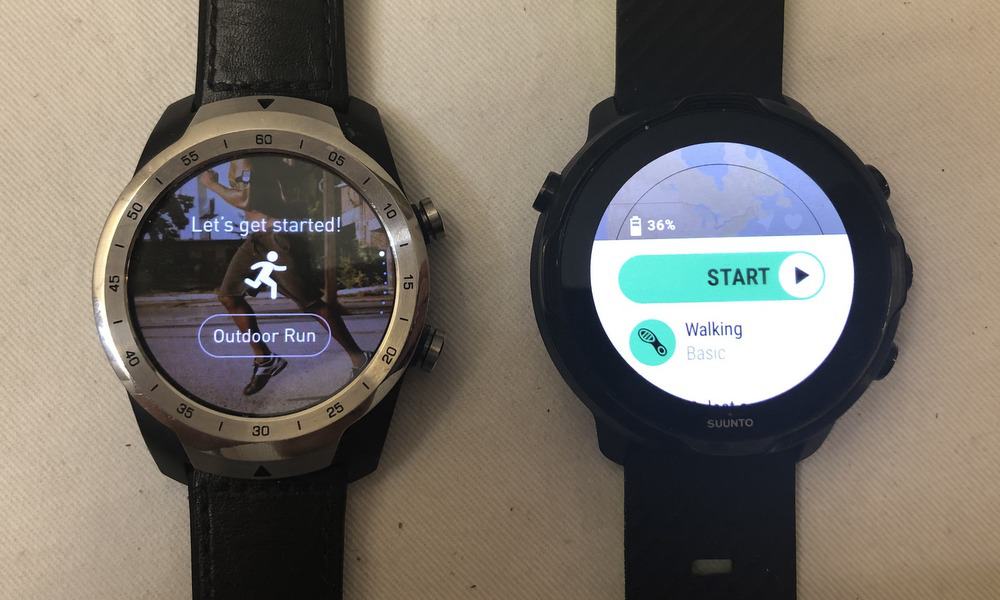
Sports
The 7 is a special in that built it in order to cater to sports enthusiasts.
I really, really like the that comes with the 7. Whereas the comes with the standard Wear OS sports , the Google Fit suite. Both offer varying degrees of capabilities.
The is superior to the Wear OS’s Google Fit suite because it offers better analysis of your workouts. For example, the will tell you how effective your is and how much rest time to schedule before your next .
The ’s Google Fit is much more rudimentary in what it can offer. You do get basic details such as location data, speed, distance, data but when compared to the 7, you don’t get the in depth analyses.
Just a little note — the is not rated to be taken underwater. Ironic, given that the less “pro” Ticwatches such as the E2 and S2 are all perfectly fine underwater. If you intend to buy a smartwatch for swimming, you would do well with the Suunto 7. It’s the ultimate .
Unfortunately, both smartwatches do not offer any abilities. has become something that’s so common in watches of every brand from to the that only having on both devices is a bit of a let down, especially on the premium that is the 7.
Winner: 7
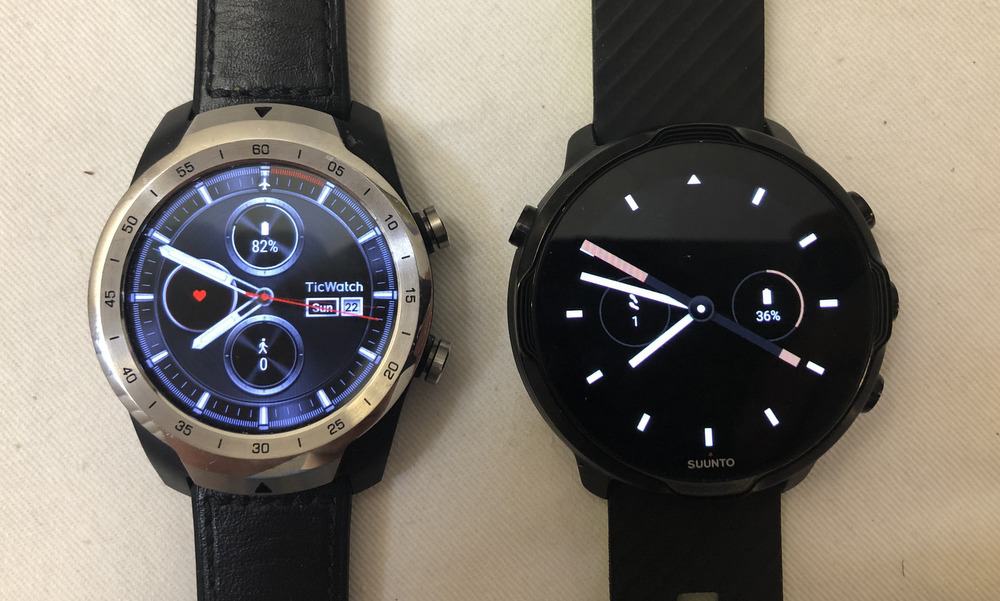
Verdict
The really looks like a more sophisticated smartwatch as compared to the 7. Unfortunately, that’s really where it ends.
The 7 has more advanced hardware and better software for sports enthusiasts. and the are some examples, in addition to the higher-end RAM and processor.
That said, you will be paying a premium for the 7’s advanced features and not everyone can benefit from it.
Other recommendations
In my opinion, I would strongly consider the Garmin Fenix 6 because it’s an excellent activity tracker, fitness tracker and also has sleep tracking integrated into it. The higher tier watches have too which is excellent.
If you don’t want to spend so much on your smartwatch, and really want something that’s much more geared towards everyday use, then you could stick with a or the smart watches.




